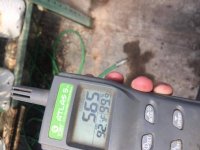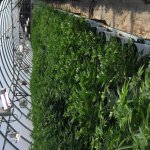C
cannaisok
Yeah, I have to be little more precise next time. I am thinking of Air exchange and air circulation as different things. air exchange is how often the air inside my tent is completely exchanged(max 2times a minute)
Air circulation is air movement inside the tent. eg i shut down my inline exhaust I wont have air exchange but still lot of air movement cuz of my fan inside the tent.
If I exchange the air inside my tent to cool it down I would suck all moisture out and quickdry my plants.
this is the reason I was asking if air circulation/movement(WIND ) inside the tent would help preventing molds.
) inside the tent would help preventing molds.
Finally i think i could answer the question myself.
If we have a room with 68%rh and very few air MOVEMENT/WIND. the RH is NOT equal in all parts of the room. For example inside the bud or between the leaves it can still have 90%.
Same exact room with 68%Rh and a fan that is moving the airflow between all leaves and budsites will make the enviroment more even and the spaces between the canopy are maybe 72% then.
hope you can understand my theory, english is not my native language.
if we want to adjust the overall RH inside the tent, we have to play with air exchange.
peace.
Air circulation is air movement inside the tent. eg i shut down my inline exhaust I wont have air exchange but still lot of air movement cuz of my fan inside the tent.
If I exchange the air inside my tent to cool it down I would suck all moisture out and quickdry my plants.
this is the reason I was asking if air circulation/movement(WIND
Finally i think i could answer the question myself.
If we have a room with 68%rh and very few air MOVEMENT/WIND. the RH is NOT equal in all parts of the room. For example inside the bud or between the leaves it can still have 90%.
Same exact room with 68%Rh and a fan that is moving the airflow between all leaves and budsites will make the enviroment more even and the spaces between the canopy are maybe 72% then.
hope you can understand my theory, english is not my native language.
if we want to adjust the overall RH inside the tent, we have to play with air exchange.
peace.





